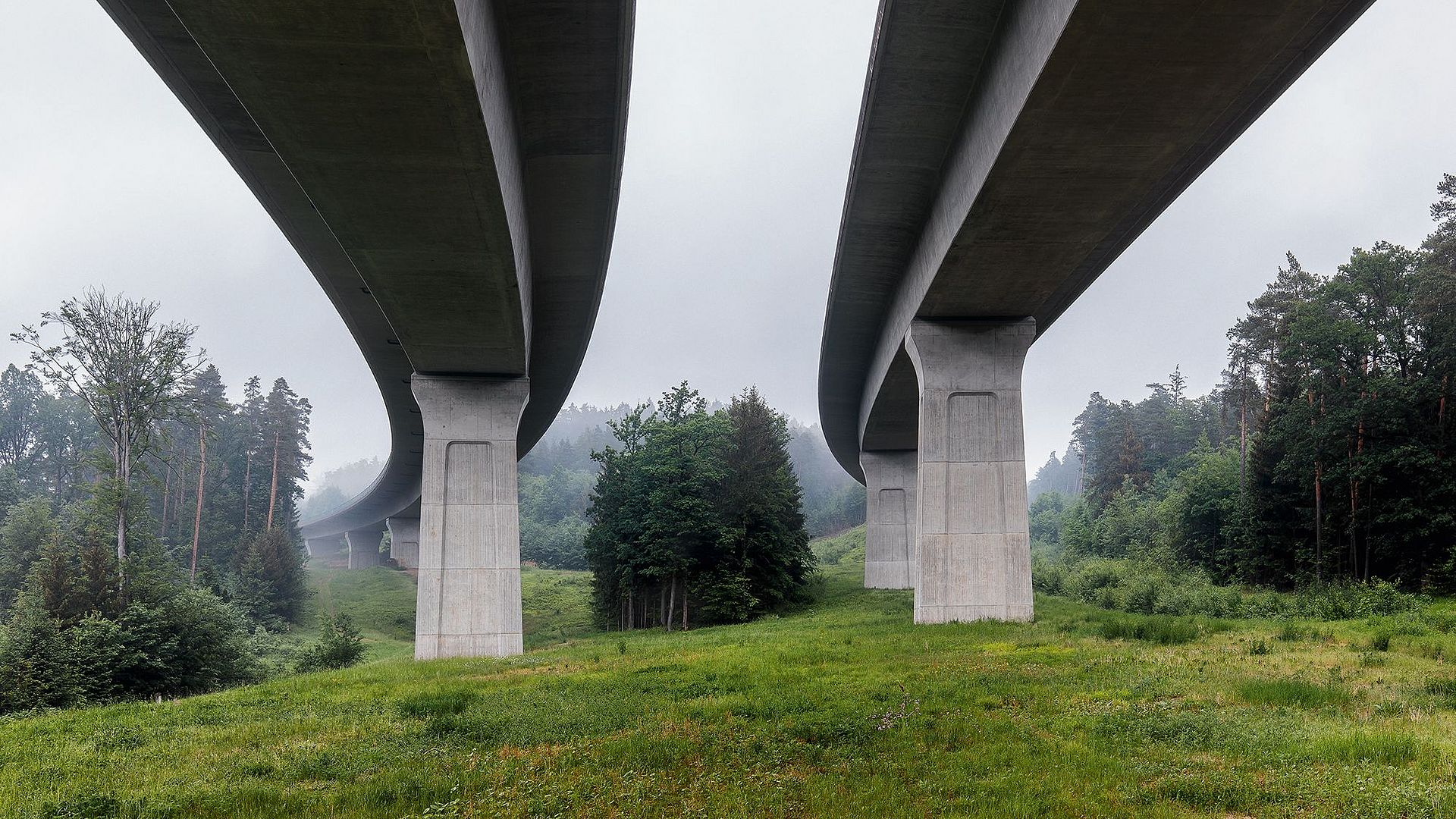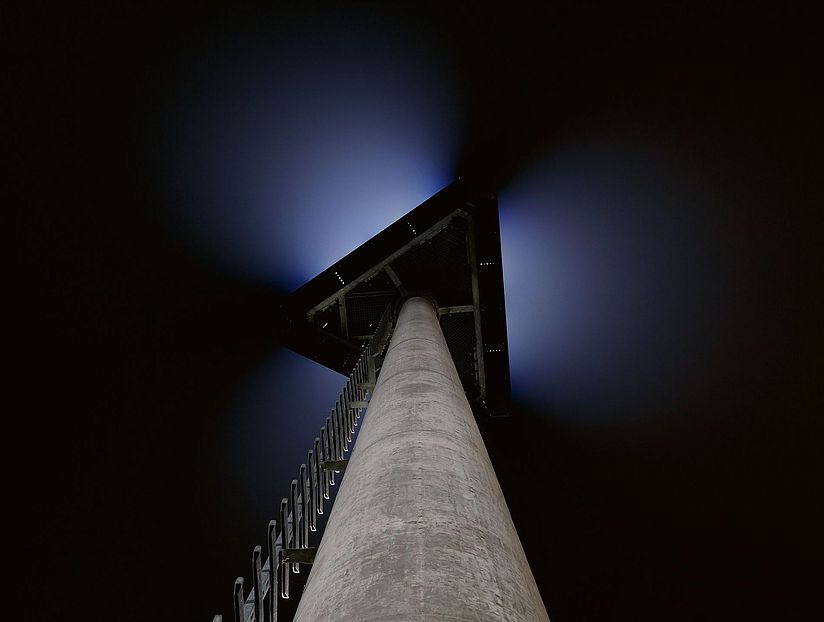
Photo: Michael Tewes
Special exhibition
Auto Land Scape
7 April 2022 until 31 October 2022
From the herd of cows under the bridge to the small woodland between the tracks, and up to the sports cars on the transporter.
Kuhherde unter der Autobahnbrücke A9. Photo: Michael Tewes
Highways are more than just transportation routes. They represent mobility and progress, engineering prowess and environmental destruction, individual freedom and traffic congestion. While the German autobahn was once used as a propaganda tool by the Nazi regime, its significance as a central transportation route grew primarily in the post-war period. Today, it is an extensive infrastructure network stretching nearly 13,200 km—making it the fourth-longest network in the world.
Autozug mit Sportwagen. Photo: Michael Tewes
Many people use highways daily. The trips are often so monotonous and tiring that the structure itself fades into the background. Due to the high speeds, the view for most users is dominated by gray asphalt, cars, trucks, and traffic signs. The highway is not a place to linger: stops are limited to brief breaks, unwelcome traffic jams, or annoying breakdowns.

Nachtaufnahme von Betonpfeiler. Photo: Michael Tewes
The photographs by Michael Tewes bring the highway back into focus. They are the result of a six-year project (2014-2020) and capture what is often overlooked while driving: the reclaiming of old routes by nature, a herd of cows under a highway bridge, or the materials used in the construction of new sections.
The images prompt viewers to recalibrate their perspective. Tewes’ shift in viewpoint directs attention to an everyday infrastructure that, when viewed in this way, loses its assumed ordinariness.
Insights
The special exhibition was created in collaboration with Michael Tewes.
A book on the exhibition project has been published by Hatje Cantz.
